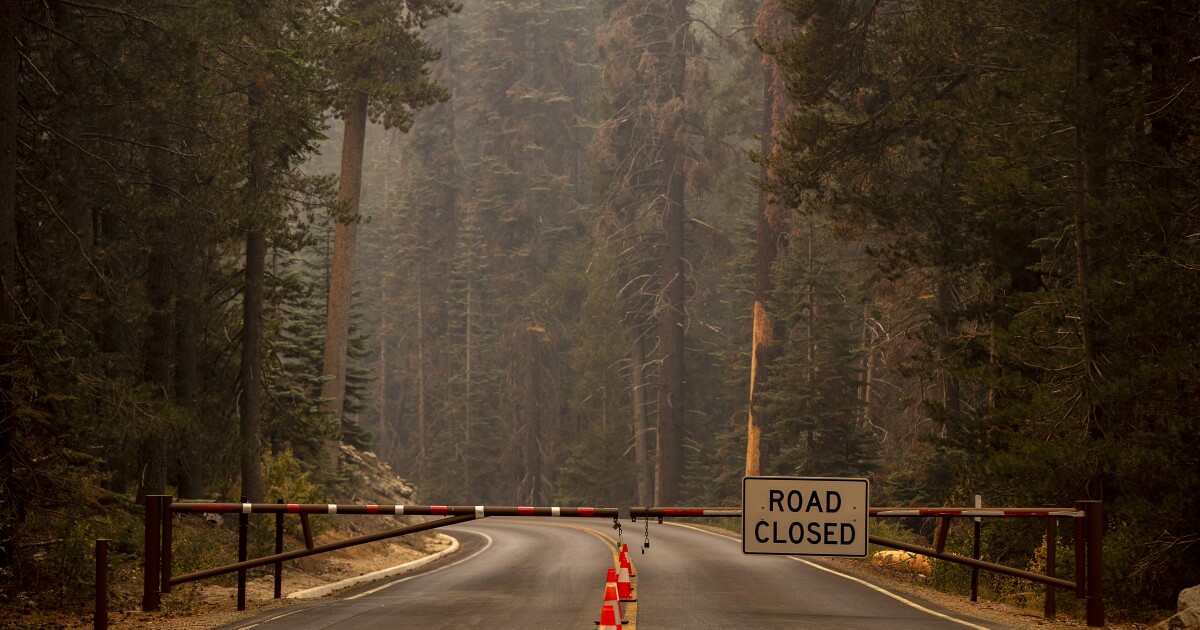
Sep 18, 2021
1 min, 58 secs
A lightning-sparked wildfire in Sequoia National Park has scorched the edge of the Giant Forest, home to some 2,000 giant sequoias that includes one of the world’s largest known trees.The KNP Complex fire on Friday burned through the westernmost tip of the forest off General’s Highway near the Four Guardsmen, a grouping of giant sequoias that mark the forest’s entrance, said Steven Bekkerus, public information officer with the Southern Area Blue Team.
Photos: Windy fire blows through Sequoia National Forest.
Giant sequoias are considered one of the most fire-adapted species on Earth, but experts say the drought-stressed trees are increasingly no match for massive, high-intensity blazes stoked by climate change and a buildup of dry vegetation in western U.S.Crews were able to get into the area later Saturday, after they cleared General’s Highway — the only way in and out of the forest — of falling rocks and flaming vegetation that had rolled onto the road, Bekkerus said.As of Saturday afternoon, the fire had not affected most of the Giant Forest, including the famed General Sherman tree, believed to be the largest in the world by volume, Bekkerus said.Crews had been working for the past week to prepare the Giant Forest for fire by wrapping trees, including General Sherman, in protective structure wrap and raking vegetation from around their bases.The Forest Service has been conducting controlled burns in the sequoia groves since the 1960s to remove excess vegetation that could help fire burn hotter and carry it up into the crowns of the trees, Bekkerus said.At the same time, Bekkerus noted, the trees can still succumb to blazes that burn hot enough, particularly amid hot, dry conditions that have left them more vulnerable to begin with.
“We are currently in a historic drought, and these trees are stressed,†Bekkerus said.The Giant Sequoias Land Coalition of federal and state agencies, universities, tribes and conservationists is now working to put together a plan to ensure the trees’ long-term viability in the face of what has become an existential threat, Bekkerus saidHe noted that the giant sequoia is an iconic symbol of the nation’s open spaces and is prominently featured in the National Park Service logo“This is the second-oldest park in the country after Yellowstone, and the reason for the park is the sequoia trees,†he said